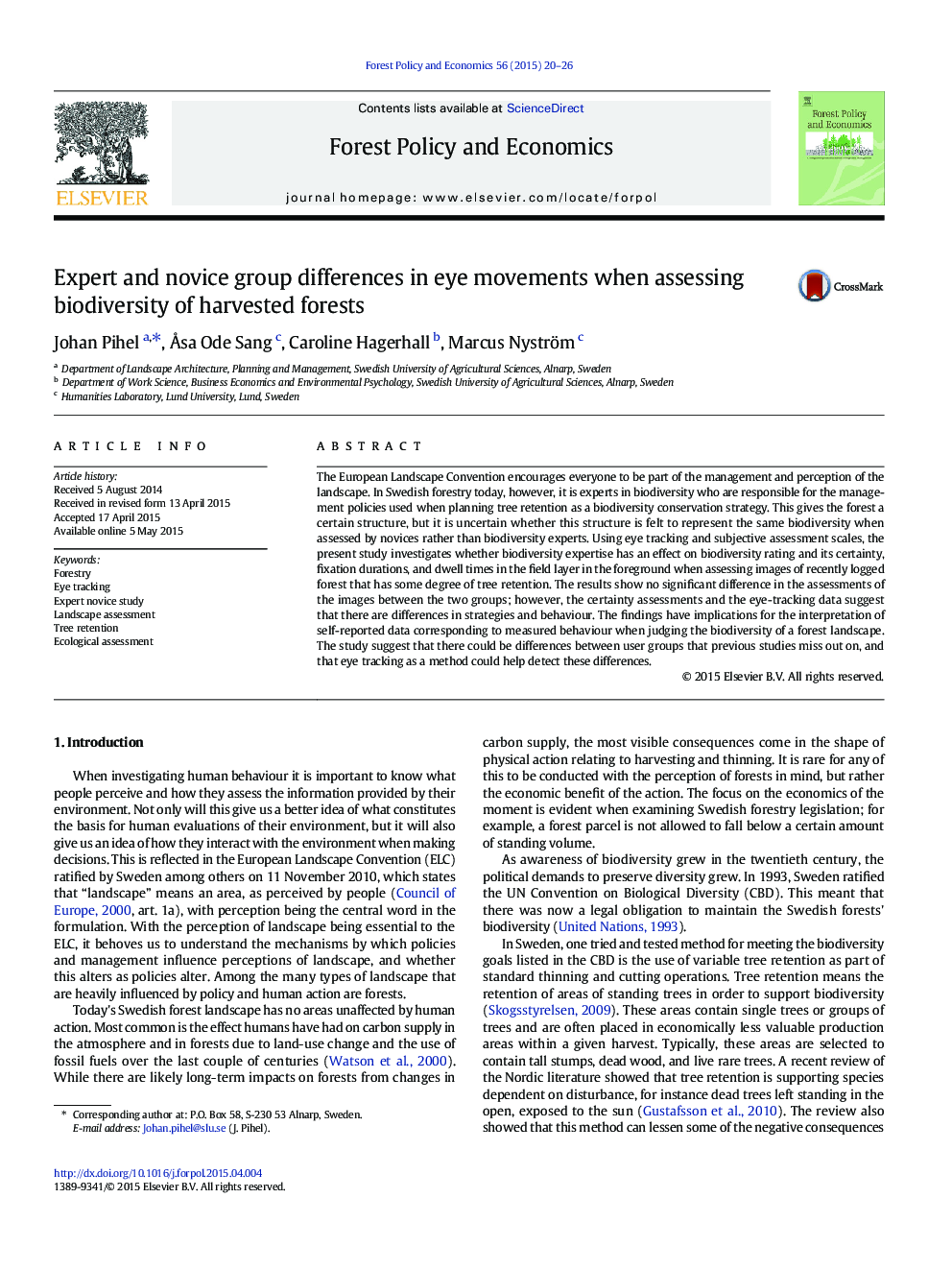| کد مقاله | کد نشریه | سال انتشار | مقاله انگلیسی | نسخه تمام متن |
|---|---|---|---|---|
| 91370 | 159789 | 2015 | 7 صفحه PDF | دانلود رایگان |
• Two different groups rate biodiversity while their eye movements were tracked.
• Groups differed in certainty of ratings but not in biodiversity rating.
• Groups had marginal difference in fixation duration and time looking at field layers.
• The study uses eye tracking to detect subtle differences in data between groups.
• Assessment and underlying behaviour are affected by expertise, which in turn affects policy.
The European Landscape Convention encourages everyone to be part of the management and perception of the landscape. In Swedish forestry today, however, it is experts in biodiversity who are responsible for the management policies used when planning tree retention as a biodiversity conservation strategy. This gives the forest a certain structure, but it is uncertain whether this structure is felt to represent the same biodiversity when assessed by novices rather than biodiversity experts. Using eye tracking and subjective assessment scales, the present study investigates whether biodiversity expertise has an effect on biodiversity rating and its certainty, fixation durations, and dwell times in the field layer in the foreground when assessing images of recently logged forest that has some degree of tree retention. The results show no significant difference in the assessments of the images between the two groups; however, the certainty assessments and the eye-tracking data suggest that there are differences in strategies and behaviour. The findings have implications for the interpretation of self-reported data corresponding to measured behaviour when judging the biodiversity of a forest landscape. The study suggest that there could be differences between user groups that previous studies miss out on, and that eye tracking as a method could help detect these differences.
Journal: Forest Policy and Economics - Volume 56, July 2015, Pages 20–26
